Yoga to de stress
Many people feel stressed most of the time according to experts. So how can we combat stress, a veritable scourge of modern times, to avoid burnout?
Through breathing exercises and gentle muscle stretching, yoga is a good method for calming stress attacks. Born in India more than 4000 years ago, yoga is now practiced all over the world.
Known for its benefits on body and mind, yoga does not require a lot of equipment. A simple yoga mat is enough to introduce you to the anti-stress techniques provided by this ancestral art.
Yoga against stress: A few figures on stress
It is quite difficult today to find surveys on stress and anxiety in general.
When you go to the doctor, it is very rare that the reason for the consultation is stress. You don't admit to yourself that you are stressed and that you are going to see a doctor to remedy it.
In the United States, the American Institute of Stress estimates that stress is responsible for 75-90% of medical consultations and 60-80% of work-related accidents.
However, it is the symptoms of stress that lead people to seek medical attention: insomnia, back pain, muscle tension, increased heart rate, and even depression.
Most of the surveys conducted focus on stress at work. But obviously, professional stress has an impact on the private sphere and on well-being in general. The cost of work-related stress is estimated at several billion.
For the company, this mainly involves absenteeism, turnover, work accidents, reduced creativity and productivity and a deterioration in the work environment.
For the company, it is mainly the risk of illness and the health costs incurred that are taken into account in calculating the cost of stress.
For the employee, the consequences are manifold:
• 37% of working people surveyed say their sleep is disturbed because of work,
• 30% report that their health deteriorates because of work,
• 35% say they are psychologically exhausted.

Yoga, a powerful remedy against stress
To manage stress, yoga is a ready-made solution! Indeed, it is about harmonizing body and mind and focusing on the present moment by combining postures called asana in Sanskrit.
According to Carine Barco, hypnotherapist and yoga teacher, "while yoga is often practiced as a form of physical exercise, it is first and foremost a science of well-being that seeks the health of the body and the union between body and mind".
Yoga is a form of letting go, a moment to oneself in a world that often moves too fast and in which one can quickly feel overwhelmed and stressed.
It's not just a physical exercise as Carine Barco explained, it's a true art of living. The practice of yoga nantes allows you to learn how to manage stress by acting on the relaxation of the muscles and the spine but also on breathing.
Practicing yoga regularly allows you to reach a level of serenity and calm important to fight against anxiety and relax.
Forget the problems of insomnia, the feeling of heavy legs, muscle tension or back pain. Did you say magic? Almost!
Doing yoga can also help you lose weight.
Yoga requires rigor and discipline just like any exercise. You have to give a little bit of yourself, but it's worth it!
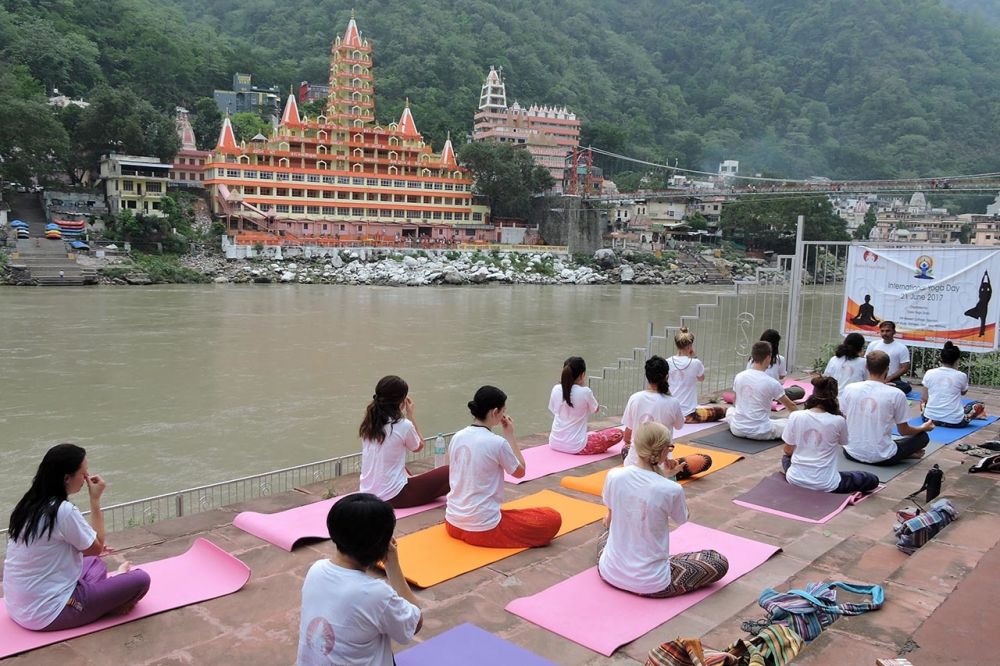
Which yoga postures against stress?
While regular practice of yoga is beneficial for the body and mind, there are postures that you can easily perform at home or in the office whenever you feel stressed and need it.
Here is a series of four postures from hatha yoga (the best known in the West) to release tension in 5 minutes.
The chair (Utkatasana) to warm up
This posture helps concentration and relieves physical tension.
It is a question of making as if one sat down on a chair:
• Standing with feet together, bend your knees while pushing your buttocks back,
• Raise your arms above your head in the extension of your back, hands together,
• Hold the position for 3 full breaths by squeezing the abdominals and keeping the heels on the ground.
The standing clamp (Padahasta Asana) to relieve tension
This posture stretches the back and helps oxygenate the brain and relieve nervous tension.
Remember to tilt the pelvis backwards and let gravity do the work:
Standing, feet together, shoulders are low, arms are in the air,
Take an inspiration and on the expiration, lower the head and the bust until the fingers touch the ground (if necessary bend the knees),
Slowly go back up on one breath,
Repeat 3 to 6 times, keeping the belly covered during the exercise.
The tree (Vrksâsana) to improve balance
This posture allows you to refocus your attention by working on your balance:
• Standing with feet together, place the right foot on the inside of the left thigh (on the knee or ankle if it is too difficult),
• Raise your arms to the sky and then join your hands in front of you on an exhalation,
• Look ahead,
• Hold the position for 3 full breaths and change legs.
The cat that stretches (Marjarasana) to relax the back
This posture is perfect for developing respiratory "flexibility". It stretches and muscles the back to fight against pain:
• On all fours, hands in line with the shoulders and knees in line with the hips, let the back be placed naturally,
• The head is in the extension of the spine, the abdominal muscles are tight,
• Inhale slowly by digging the back, vertebra after vertebra, and raising the chin and looking up to the sky,
• Exhale slowly, rounding the back and lowering the chin and looking down,
• Repeat between 5 and 10 full breaths.
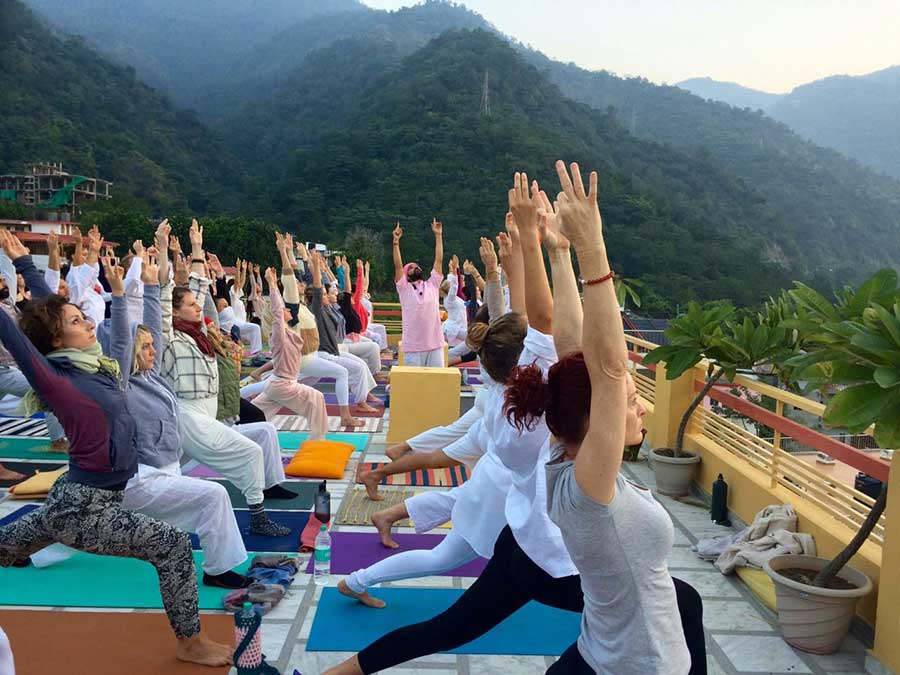
Some anti-stress yoga exercises at the office
Sometimes you may feel a wave of stress wash over you while you are at the office. You feel tired, irritable, angry. Simple and quick exercises can help you lower your stress level and regain your well-being without even leaving your office chair.
Relax your eyes
Staying in front of a screen all day is not particularly indicated and you may feel tired with stinging eyes, even headaches or ophthalmic migraines.
Before reaching this stage, don't hesitate to massage your eyebrows, temples and the top of your eyes with the intensity you want. Then put your palms of hands on your eyes for a few seconds.
This exercise helps to release tension in your eyes and facial muscles.
Relieve neck tension
Tilt your head to one side, trying to get as close as possible to your shoulder. To stretch further, you can press lightly with your hand.
Breathe normally for 5 breaths before doing the same thing on the other side.
Stretching the shoulders
Place your hands on your shoulders and then make five slow circles with your elbows, first forward and then backward.
Inhale as you raise your elbows and exhale as you lower your elbows.
The cat/cow on a chair
The idea is to reproduce the cat's stretching but in a sitting position.
Put your hands on your knees, with your back straight. As you breathe in, open your chest, bring the shoulder blades closer together and extend the neck looking up at the sky. As you exhale, round your back and bring your chin back to your chest. Repeat the exercise 5 times.
The twisting exercise
Grasp the seat of your chair in the middle behind you with your right hand. Bring your left hand to your right leg and open your chest to the right. Your eyes are behind you. Breathe normally for 5 breaths before doing the same thing on your left side.
The posture of the pigeon in sitting position
Put your right foot on your left knee and let your right knee open towards the ground. Breathe deeply.
If possible, keeping your back straight, lean forward slowly to increase the stretch. Stay 5 breaths before changing sides.
Lateral arm extension
Inhale by raising your arms above your head, palms open at your sides. Stand up straight and keep your shoulders low. Exhale and slowly lower your arms to your sides, palms facing down.
Repeat three times, controlling your movements and synchronizing them with your breathing.
The crescent moon
For this one, it is better to stand upright even if you can also do it in a sitting position. In the same way, at the office, you can also take the opportunity to do the standing clip and tree posture if you have an individual desk or at lunch break when you have a little more time.
The moon posture allows you to release tension by stretching your body.
Raise your arms to the sky as you breathe in. Join your hands by crossing your fingers between them. Lean sideways on the exhalation. Hold on the side two or three breaths, avoiding the shoulders. Return to the center on one inhalation.
Repeat on the other side and as many times as you feel the need.
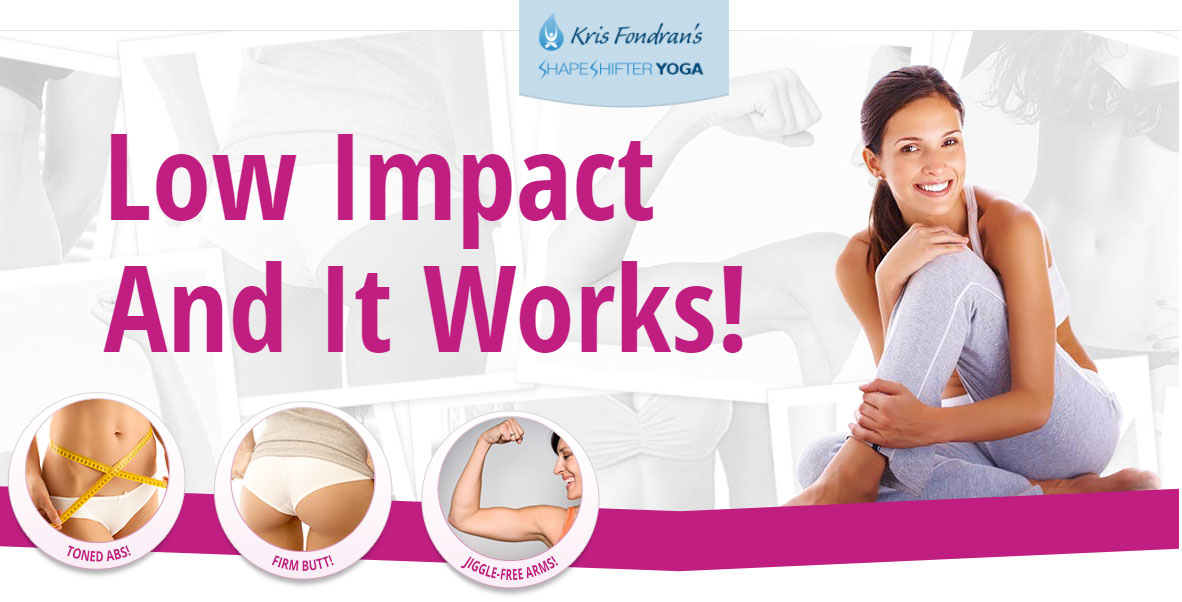
Fight against stress: The asanas to do at the end of the day
Once your work day is over, you can take a little more time to lower your blood pressure, clear your negative thoughts and avoid chronic stress. Here are a few postures to do on your way home from work or before you go to sleep.
The Butterfly
Sit with your back straight and bring your legs back towards you by sticking your feet together. Grab your feet and try to bring them as close to your pelvis as possible while pushing your knees towards the floor.
Stay in the 10-breath posture with deep breaths.
Half candle / feet on the wall
Facing a wall, lie down and place your legs against the wall. Your back and shoulders should be flat on the floor, with your arms at your sides. Your buttocks are against the wall to form a right angle.
Stay in the posture for about ten calm and regular breaths. If you master the posture well, you can even do it without a wall.
The half-bridge
Lie on your back with your arms on each side of your body. Bend your knees and try to bring your feet as close as possible to your buttocks, keeping them as far apart as your hips.
Press your feet to the ground and push your pelvis upwards from your perineum. Tighten your shoulders if possible and raise your upper chest to open. Tuck in your chin and extend the nape of the neck.
The crocodile
Lie on your stomach. Spread your legs the width of your hips. Bring your arms forward and cross them. Rest your head on your crossed arms. Remain in this posture as long as you wish while breathing quietly.
The fish
Lie on your back, legs stretched out. Lift your pelvis and place your hands under your buttocks, palms facing down. Your buttocks are resting on your hands.
Tuck your arms and elbows under your chest as you breathe in and lift your upper body. You then lean on your elbows and forearms. Your shoulders are towards the back, your neck stretched and your gaze backwards.
Hold the pose for 10 calm and regular breaths before returning to the starting position on an exhalation.
The camel
In the same lineage as the fish, you can do the camel posture.
Kneeling on your mat, your legs are parallel and spread out the width of your hips. Move your pelvis forward: your pubis is forward, your sacrum downwards.
Come to place your hands on your buttocks, fingers downwards and tighten your elbows to raise your chest. The shoulders move away from the ears, the belly is tucked in and breathing is fluid.
Continue to move your hips forward and open your chest, accentuating the back bend. Your gaze is up but the neck is held. If you can, grab your heels (your toes can be used as a hook on the ground so you don't lose your balance).
Take a few breaths before rising on one breath, pushing your hands against your pelvis, chest up.
Other postures to relax you
• The child's posture,
• The stretched puppy,
• The dog upside down,
• The posture of the corpse.
Do not hesitate to initiate yourself to meditation also to eliminate the effects of stress.
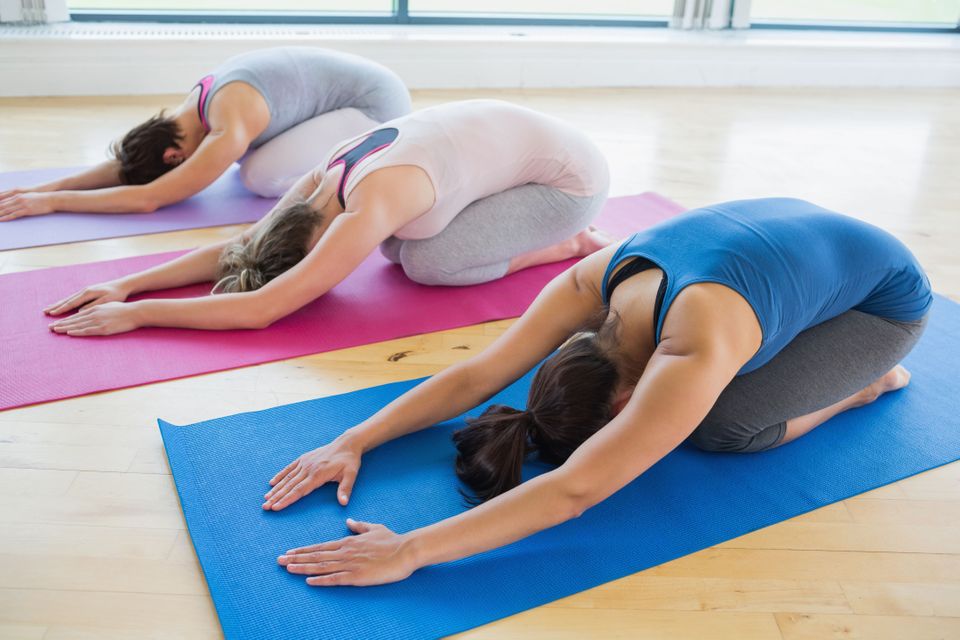
Other tips from the yoga philosophy to relieve any tension
We tell you how to relax with techniques from the art of yoga living. You don't necessarily need to do postures, which are sometimes difficult to do in the office and/or during a stressful episode.
Breathe deeply
Abdominal breathing is obviously the basis of yoga practice. The relaxation exercises are all based on good breathing.
Known in traditional yoga as pranayama, literally "life force", deep breathing brings in extra oxygen which helps the body to relax.
Deep breathing stimulates the parasympathetic nervous system, which helps to relieve tension and reduce blood pressure, while rapid breathing, synonymous with stress, stimulates the orthosympathetic nervous system.
Breathing exercise: Nordi Shodana
Breathing plays a very important role in stress management. But sometimes it is not enough to just breathe deeply to be soothed.
Nordi Shodana exercise, which has been tested many times, is very effective in lowering the heart rate and slowing down breathing, thus relieving stress.
Lowering your heart rate allows you to "fool" your stressor into thinking that the situation is less stressful. Not bad, isn't it?
Sit down (but it also works standing up). Place one hand in front of your face. Use your thumb to plug one nostril and your ring finger to plug the other.
Nordi Shodana is a practice of alternate breathing :
• Plug your right nostril,
• Inhale with your left nostril,
• Unclog your right nostril and plug your left nostril,
• Breathe out with your right nostril,
• And so on for about ten breaths.
Square Breathing
Another breathing exercise that is extremely effective in lowering your heart rate and stress level is square breathing:
• Inhale on 4 beats,
• Block your breathing on 4 beats,
• Exhale on 4 beats,
• Block your breathing on 4 beats,
• Repeat on about ten breaths.
When you count, do it slowly: count 1 and 2 and 3 and 4 and. If 4 beats seems too long, you can do it on 2 beats. The same if it seems too short, count 6 or 8 beats. The main thing is to always have the same count between inhalations, exhalations and blocked breaths.
Visualization
The American Institutes of Health are convinced that visualizing a positive image creates a relaxed reaction.
Comfortably installed, just close your eyes and visualize a peaceful scene (beach, forest, future vacations...). Imagining yourself achieving a future goal is also beneficial and brings calm and well-being!
A tip from Naam yoga
According to Sharon Melnick, author of the book Success Under Stress, applying pressure to the joint at the base of the index and middle fingers activates a nerve that relaxes the area near the heart, allowing the feeling of stress to leave.
Gradually relax the muscles
Tighten the foot muscles as much as possible and then relax them. Gradually move upwards: calves, thighs, buttocks, stomach, arms, hands, ending with the face.
Contracting muscles to relax seems paradoxical but it works. It is often recommended for patients who have suffered from depression or anxiety disorders.
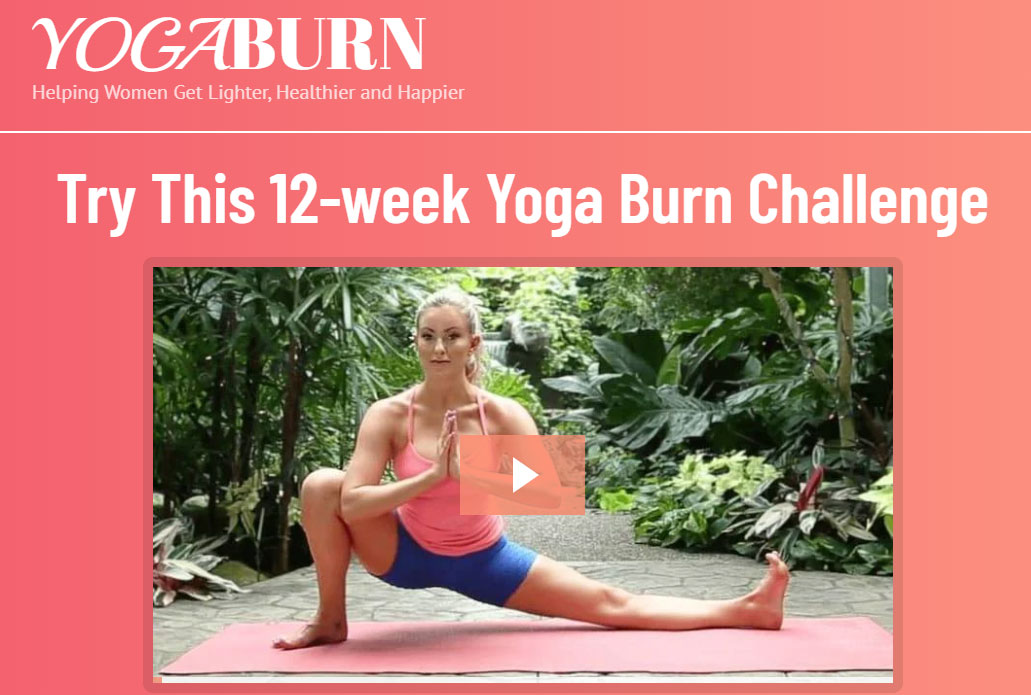
How often should I practice yoga to combat stress?
Yoga is effective from one hour a week like running or singing, but the more regular the practice, the more beneficial the effects are felt.
To fight stress and enjoy all the benefits of yoga, it is recommended to practice it every day.
Yoga is above all a way of life and practicing it for 10 minutes every day brings more benefits than an intensive practice of one hour per week.
To be adapted of course according to your stress level and your schedule!


